QuestionQUESTION: i adopted a 3 yr old female ball.the people i git her from had done the same .got her out of a bad habitat.i have had her about 3 weeks.she is in a 40 gal with 2 hides.keep temp about 85.hum about 45.she is not very active.moves from one hide 2 the other.she is about 40 inchs long.i have tryed to feed her a small rat.large mouse.all had been froz and thawed.no luck.will she become real active if she gets hungry.like i say she is so large she dont stir much.she does stay out a times.not like she is sick.to fat.ha.any help would be great.i am 67 and just got into balls.thanks ron.people i goe her from told me she had eaten.so its been about 5 weeks now sense last feed
ANSWER: Ball pythons are a very quiet, docile species that tends not to move much. They are nocturnal, so you will rarely see them moving around during the day. They prefer to spend most of their time in hiding, because they are shy.
Your snake will benefit if you give her a 90F basking area on one side of the tank, using an undertank heater or heat cord. It's also important to keep the humidity around 60%. It can be a challenge to keep humidity in a glass tank with a screen top, and I recommend covering all but an inch of the top with plastic wrap if this is an issue. (Of course, don't use heat lamps to provide heat--they drive humidity out very quickly). If the humidity is low, the snake will suffer from chronic low-level dehydration, which causes bad sheds and puts stress on their organs and respiratory system. They simply don't drink enough to compensate.
Ball pythons often dislike being moved, and it's not unusual for an adult snake to refuse food for several months after going into a new environment. Wild ball pythons really only eat about half of the year, and a snake with excellent weight can go for an entire year without food, and suffer no ill effects.
However, failure to eat in any snake, even a ball python, is USUALLY a sign that something is wrong. It's been long enough for her to adapt to her new home, so now you must do trouble-shooting.
First, ball pythons are notoriously picky eaters--some of their reputation for this is deserved. If you can, find out what the ball python last ate, and offer her whatever that was. The chance she will take a new food item as her first meal in a new home is pretty slim. If she was not eating frozen-thawed before you got her, she is highly unlikely to eat it now. She literally doesn't consider it to be food--it doesn't trigger a feeding response, and she will literally starve herself to death rather than eating something she doesn't see as food. I highly recommend trying live mice or a live hopper rat. Offer the food at night, after the lights have been out for a half hour. Do not leave the rodent in for longer than one hour. A live rodent can attack and injure or even kill a snake, as snakes often will not defend themselves, but instead try to flee. Give this at least 3 tries. Wait at least 3 days between each attempt. If that doesn't work...move on to the next possibility.
Ball pythons will also refuse to eat if they do not feel secure. Swallowing prey occupies their mouth, and thus they have no way to defend themselves, so they won't do it if they are nervous. If the cage is in a high traffic area of the home, try moving it to a more secluded, quieter place. Make sure her hides are small--just big enough for her to squeeze into--and have single entrances. As a last resort, fill the tank with crumpled newspapers, and then introduce the live rodent the next day (leave the papers in). It's also possible your tank is simply too large. In the wild, ball pythons spend most of their time inside rodent burrows and termite mounds--dark, close, humid environments. Many ball pythons feel intimidated by spacious cages. At age 3, your python should weigh about 1500 grams, but if she hasn't been cared for properly, she may be smaller. If this is the case, try a 20 gallon long tank, instead. Again, the trick with the newspapers may help after she has a week to adjust to her new home.
If that doesn't work...
You said that you got the snake out of a bad habitat. Perhaps she isn't healthy. Take her to a veterinarian, and have him check her overall health, and (particularly important) do a test for internal parasites. A load of parasites can kill a snake's appetite, and parasites can build to lethal levels in a captive situation. Respiratory, mouth, and skin infections also cause ball pythons to lose their appetite. (In fact, loss of appetite is often your first sign that something isn't right with the snake--they tend to stop eating whenever they develop any kind of health issue). An annual checkup by an experienced reptile vet is a good idea in any case--just as with any other pet, catching an illness or problem early usually means that the cure will be relatively inexpensive, and much more likely to succeed. Most snake illnesses are of this nature--easily treated, and survivable when caught early, but deadly if left without treatment.
During this time, you should weigh her once a week. If you don't have a scale, you can get an inexpensive digital scale from Target--they have them in the kitchen appliance section. Make sure it registers in 1 gram increments. Reptiles are traditionally weighed in grams, and weight tends to be more important than length (since you can't get them to cooperate with a measuring tape anyhow). If she loses more than 30 to 60 grams per month, it's likely she is ill. Their slow metabolism means that a healthy ball python will not lose more weight than that per month. Of course, a snake that is already underweight cannot afford to lose nearly as much! Keep in mind, when you weigh her, that she should be at least 1300 to 1500 grams, and have a large, rounded body--ball pythons are hefty snakes with small heads. A triangular shape along the spine indicates an underweight snake (although it's also seen in gravid females--but unless she has been housed with a male, she isn't likely to be gravid. If she HAS--then don't bother trying to feed her again until she lays her eggs. :)
---------- FOLLOW-UP ----------
QUESTION: i have not been able to contact the people i got her from.i have no idea if food was live or frozen.if i put a med size mouse in with her do i need to watch all the time to make sure the mouse dont pick on her.ha.would a med mouse even try and get close to a snake this large,thanks again.do you have a web site with info on it.
AnswerIt's a good idea to keep an eye on them, yes. Mice are surprisingly vicious, particularly if they decide they're cornered. There are photos on the web of ball pythons that have had all the skin along their back chewed off, and their spines exposed, by mice.
The ideal prey size is as big around as the widest part of the snake's body--however, some ball pythons have only been given mice, so they won't take rats when they're offered. There are some tricks for switching them over. If she's around the right size for her age, she has probably been eating rats. It takes 3 or 4 mice to equal the size of a small rat.
We do have articles on our website at http://www.EclipseExotics.com
You can find a link to them on the right side of the page.

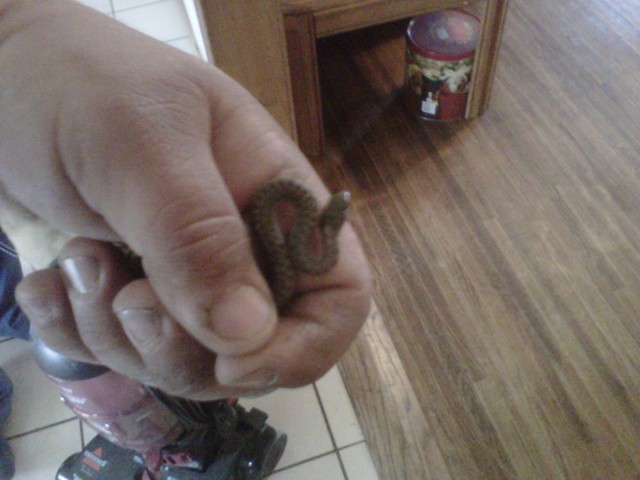 We have alot of snakes what are they?
Question
Is it dangerous?
My Husband has found several
We have alot of snakes what are they?
Question
Is it dangerous?
My Husband has found several
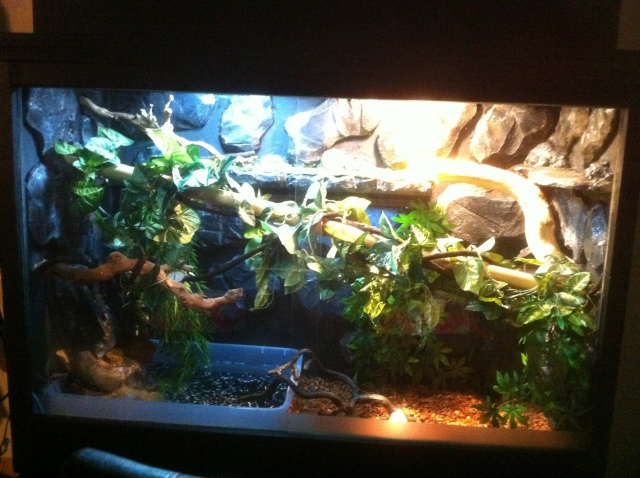 aggressive water dragon
QuestionQUESTION: Hello Tracie,
i have a Chinese water
aggressive water dragon
QuestionQUESTION: Hello Tracie,
i have a Chinese water
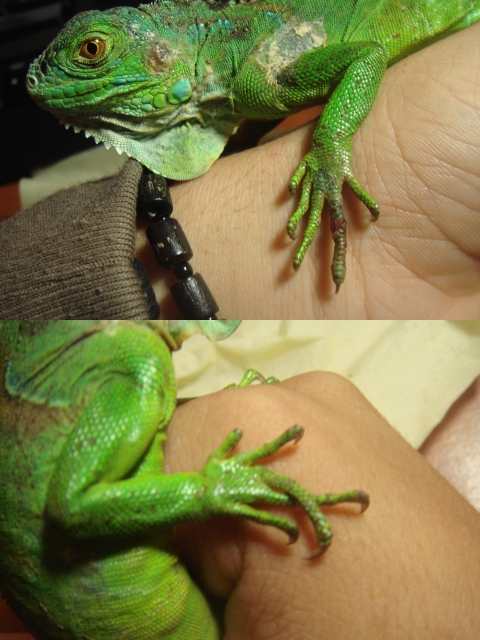 Iguana toe problem...
Question
toe problems
Hey there,
I adopted a baby iguan
Iguana toe problem...
Question
toe problems
Hey there,
I adopted a baby iguan
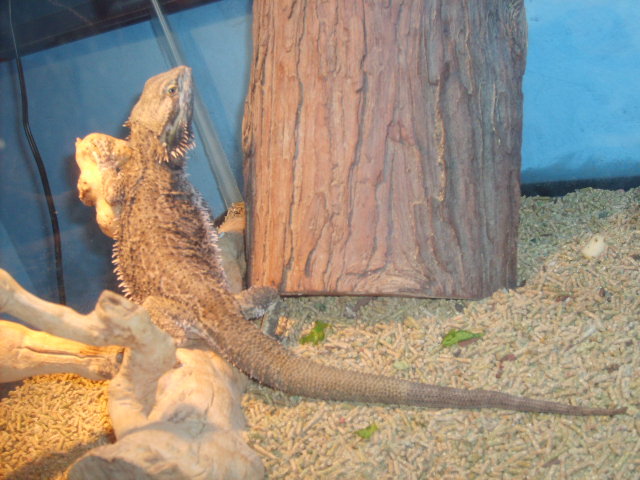 ranking beardie or not?
Question
BubbaBoy
i recently bought a bearded dragon it
ranking beardie or not?
Question
BubbaBoy
i recently bought a bearded dragon it
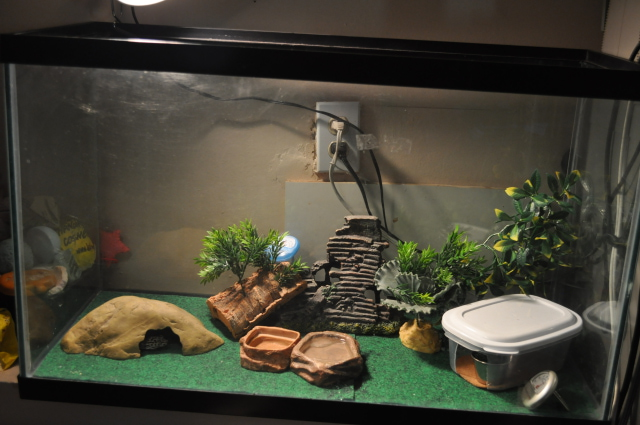 leopard gecko eye sight
Questiontank
buttons
QUESTION: hi there,
leopard gecko eye sight
Questiontank
buttons
QUESTION: hi there,